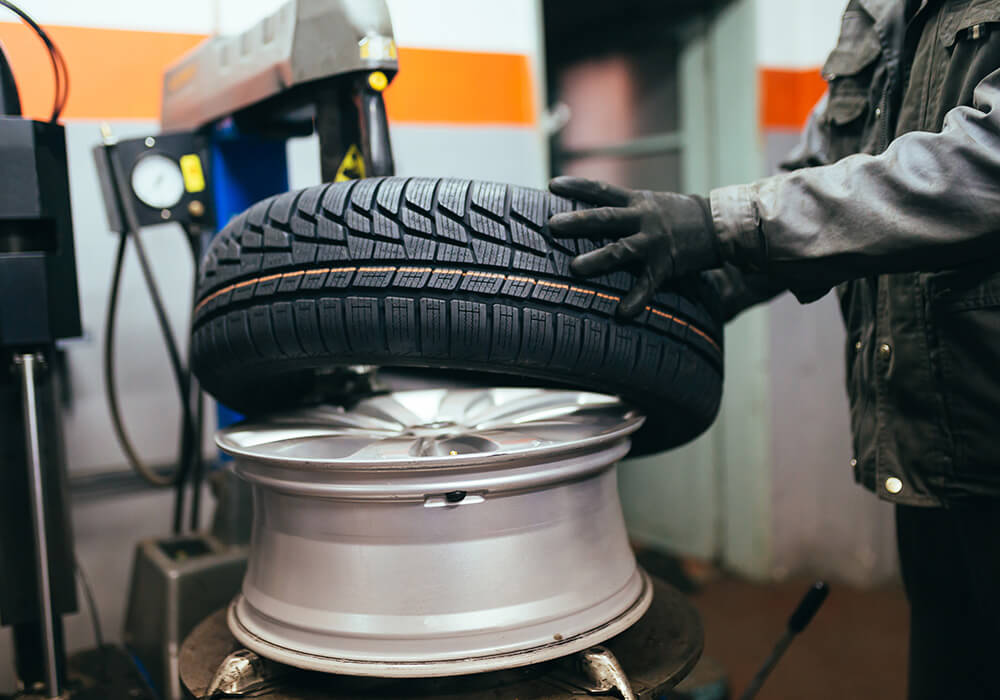Discount Tires Morris IL: Conserve Large ahead Brands
Discount Tires Morris IL: Conserve Large ahead Brands
Blog Article
Tire Fixing Myths Debunked: Separating Truth From Fiction
In the realm of auto maintenance, tire repair service holds a significant location, yet it is frequently shrouded in misconceptions and mistaken beliefs that can result in complication for automobile proprietors. Recognizing the distinction in between fact and fiction when it pertains to tire fixing is essential for making sure both safety and security and cost-effectiveness. From the misconceptions bordering patching versus plugging a pierced tire to the performance of various tire sealants, there are a number of vital areas where clearness is needed to make educated choices. Let's clarify some common tire fixing misconceptions and different them from the reality to empower you with the understanding required to navigate this crucial aspect of automobile upkeep.
Usual Tire Fixing Misconceptions
Eliminating common misunderstandings surrounding tire repair work is crucial for keeping roadway safety and prolonging the longevity of your automobile's tires. It is necessary to understand that not all leaks are created equal; while some might undoubtedly require a tire substitute, the bulk can be securely fixed.
An additional false impression is the concept that a do it yourself tire repair service package is an adequate option for all tire concerns. While these packages can be convenient for short-lived fixes in emergencies, they are not a long-term option and might not address the underlying issue (tire shop near me). Seeking the proficiency of a certified tire technician is always advised to ensure the security and honesty of the tire

Can You Repair a Punctured Tire?
Repairing a punctured tire is a typical practice in the automotive industry, often brought out by specialist technicians complying with details standards and criteria. Leaks found on the tread location of the tire are usually repairable as lengthy as they are within a specific size restriction and do not impact the tire's architectural honesty.
It is very important to note that punctures near the sidewall or shoulder of the tire are usually not repairable as a result of security issues. Such areas undertake substantial tension and flexing, making repair work unstable and potentially unsafe. Furthermore, if the puncture index is also big, going beyond the advised repairable dimension, or if the tire reveals indications of inner damages, it is safer to change the tire entirely.
The Fact About Patching Vs. Plugging
When taking into consideration the repair work of a punctured tire, recognizing the distinctions between patching and connecting is necessary for making informed choices regarding tire upkeep and safety. Patching entails repairing the tire from the inside, where a spot is applied to cover the slit. This method is considered more trusted and long-lasting as it attends to the damages internally, minimizing the danger of air leak and additional tire damage. On the various other hand, connecting is a quick solution that entails putting a rubber plug right into the punctured area from the exterior. While connecting is convenient and can be done without eliminating the tire from the edge, it is generally thought about a short-lived solution and might not offer the very same level of resilience as a spot.
Myth: All Tire Sealants Are Reliable

When read here choosing a tire sealant, take into consideration factors such as the size of punctures it can successfully fix, compatibility with tire pressure monitoring systems (TPMS), and whether it is safe for the tire material. Keep in mind, while tire sealers can be beneficial in emergency situations, they are not an alternative for proper tire treatment and maintenance.
Finest Practices for Handling Flat Tires
Taking into account the varying effectiveness of tire sealers, recognizing ideal techniques for taking care of flat tires is essential for preserving road security and automobile performance. When coming across a puncture, the very first step is to safely pull over to the side of the roadway, far from oncoming web traffic. Transform on danger lights to inform other drivers of your scenario. It is suggested to use the parking brake and location wheel wedges under the tires to prevent the vehicle from rolling. Next, consult your car's guidebook to locate the spare tire, jack, and lug wrench. Prior to attempting to alter the tire, ensure that the location is flat and steady. Loosen up the lug nuts, raise the vehicle with the jack, remove the lug nuts and flat tire, and change it with the extra tire. Tighten the lug nuts in go to website a star pattern, reduced the automobile, and securely tighten the lug nuts. Lastly, store away the puncture, devices, and equipment, and remember to examine the spare tire's pressure occasionally. Complying with these best techniques can assist you deal with level tires effectively and safely.
Conclusion
Finally, it is necessary to separate truth from fiction when it concerns tire fixing myths. Comprehending the reality regarding covering vs. plugging, the efficiency of tire sealants, and finest practices for managing blowouts can help make sure the safety and durability of your tires. By disproving common mistaken beliefs and adhering to proper repair service standards, you can make informed decisions when it pertains to keeping the health of your car's tires.
Report this page